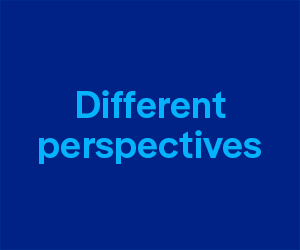By Greg O’Brien
“Living next to you is in some ways like sleeping with an elephant. No matter how friendly and even-tempered is the beast, if I can call it that, one is affected by every twitch and grunt.” – Prime Minister Pierre Elliot Trudeau, speaking to president Richard Nixon in 1969 on Canada-U.S. relations
I THOUGHT AGAIN OF THIS famous-if-you’re-a-Canadian quote after the latest American media mega-merger which will see Discovery and WarnerMedia become one.
Naturally, this particular twitch has many worried this particular elephant will now (along with other pachyderms like Netflix and Disney+ and Amazon) simply roll over, with HBO Max and Discovery+, and squash Canadian media companies such as Bell Media and Corus Entertainment.
Not so fast though. While Canada is a small market and it might look to pundits we would be easy pickings for streamers to set up shop, it’s worth remembering the Canadian rights market annually produces big time revenue for American studios and they may not be too keen to upset the peanut cart.
A source with direct knowledge of the contract Bell Media has with WarnerMedia for HBO content told us Bell pays $100 million per year for the exclusive Canadian multiplatform rights to the likes to HBO and HBO Max original content like Mare of Easttown, Game of Thrones and Last Week Tonight. $500 million (the 2019 extension is a five-year deal, we were told) is quite a tidy sum for WarnerMedia and surely wouldn’t be easy to walk away from so it can spend multi-millions annually attempting to earn that amount back by bringing its own direct-to-consumer brand, HBO Max, to Canadians.
Stateside, the ad-free version of HBO Max costs US$15/month, so to earn $100 million annually here, using a retail price of C$15, it would need 555,000 customers.
“Bell’s Crave is actually a far better, much more affordable option for Canadians. In fact, it’s one of the best streaming deals on the planet.”
Of course, HBO Max is a popular streamer featuring great content, with over 44 million subscribers Stateside and elsewhere, but Bell’s Crave is actually a far better, much more affordable option for Canadians. In fact, it’s one of the best streaming deals on the planet, which I’m not sure enough Canadians realize.
Crave costs $10/month for those streaming it – and subscribers have access to far more diverse content than HBO Max subscribers in the U.S. Besides HBO, Crave features Showtime content, as well as MGM Studios (Handmaid’s Tale), Comedy Central, Vice – and its own home-grown content.
In the U.S., you could stream most, but not all, of the top content Crave has in Canada by paying for HBO Max and Hulu, which costs a total of US$27/month for their ad-free versions. This is more than triple the cost of Crave, which is also ad-free.
(Update: Since publication of this article, readers reminded us Crave starts at $10/mo. and rises to $20 a month if subscribers want access to the full slate of recent HBO and HBO Max content. While that makes it more expensive, it doesn’t negate our contention that with the variety of content on Crave, it’s a fantastic deal for Canadians, compared to other streamers. For $6 more per month, Crave subscribers can also get Starz content.)
And yet, Crave has only around one million streaming customers. In Bell’s last quarterly release, the company said Crave had 2.9 million subscribers, but it counts both TV and online customers in those public figures. However, in its CRTC filings for the broadcast year ended August 31, 2019 (the latest available), Bell Media reported 1.9 million TV subscribers. Such data filed with the CRTC does not include digital activities.
So, we’re guessing its streaming-only subscriber count is in the million range, or at least $120 million in annualized revenue. Adding that to Crave’s pay-TV earnings found in its Commission filings and Bell likely earns more than $320 million in revenue from the brand.
U.S. streamers looking to bust into Canada must look at that and say to themselves “Crave, more than six years(!) after its launch, even with a plethora of content from multiple places and at a much lower price than we can offer, has only a million streaming subs? Why would we bother pushing into that small market any time soon when Bell and others will keep sending us nice, big, checks?”
One other piece of the puzzle worth noting is Discovery Communications is not a disinterested elephant. It actually has an ownership stake in Bell’s Discovery-branded channels here, so it’s not a simple licencing contract from which the U.S. company can simply walk away. Disney, through ESPN, also owns a chunk of TSN and RDS. The same goes for Corus’s Food Network, Cooking Channel, HGTV (both Discovery brands) and National Geographic Channel (Disney). The U.S. companies own a 19% piece of each of them.
Turning to Corus, it has not launched its own ubiquitous stand-alone streaming platform like Bell has with Crave, but has of course instead bundled 12 of its channels into StackTV, which is available through Amazon Prime Video. The company says it now has 400,000 streaming subscribers per month (some of that is its Nick+ kids streaming service). So, let’s say there are 350,000 StackTV customers. At $13/month, and subtracting 30% which goes to Amazon, according to sources, that’s nearly $39 million in additional annualized revenue Corus didn’t have prior to its Prime bundle.
Is it enough to keep paying to keep the likes of Peacock at bay (where Corus has an exclusive deal for original content from the NBC-owned streamer, where it pays a rights fee and a percentage of ad sales), as well as keep its popular Food Network and HGTV branding and content for Canada? I’m sure the company hopes so and the funds headed into the hands of these U.S. companies from Canadian broadcasters will keep them from launching their streamers here.
This doesn’t mean storm clouds aren’t constantly on the horizon, or that change isn’t always afoot. The costs for this U.S. programming is only going to rise and if I were Bell, I would surely be worried about the rumour of Amazon purchasing MGM. With Prime Video already an important streamer here and with Amazon treating video like a loss-leader, yanking MGM content like Handmaid’s Tale and the James Bond franchise away from Bell would be far easier and less costly than Discovery/Warner launching HBO Max in Canada.
“As existing content agreements expire BCE and Corus will now be negotiating with a single company,” wrote Scotiabank analysts Jeff Fan in a note to clients last week after the Warner/Discovery announcement. “This may have implications for content costs for each and the new Warner-Discovery may choose a single partner for Canada. Furthermore, on the analyst call management expressed a desire to create a worldwide streaming giant which will likely influence negotiations, however we believe Canada represents a small streaming market globally and we expect the wholesale model to Canadian broadcasters to continue.”
In the end, Canada remains a small, yet lucrative, wholesale market where the elephant to the south won’t twitch and grunt too much yet, as long as it continues to get paid.
Original artwork by Paul Lachine, Chatham, Ont.




